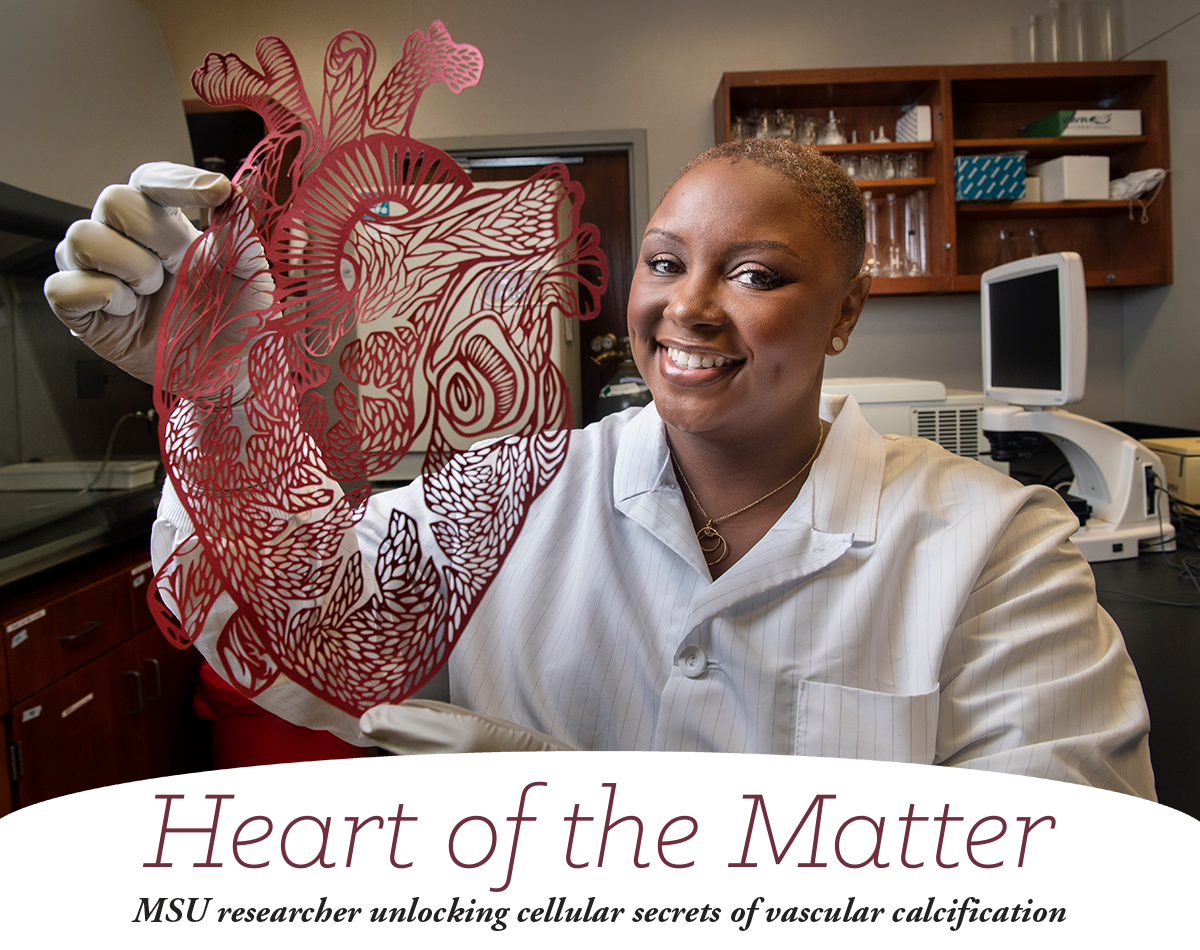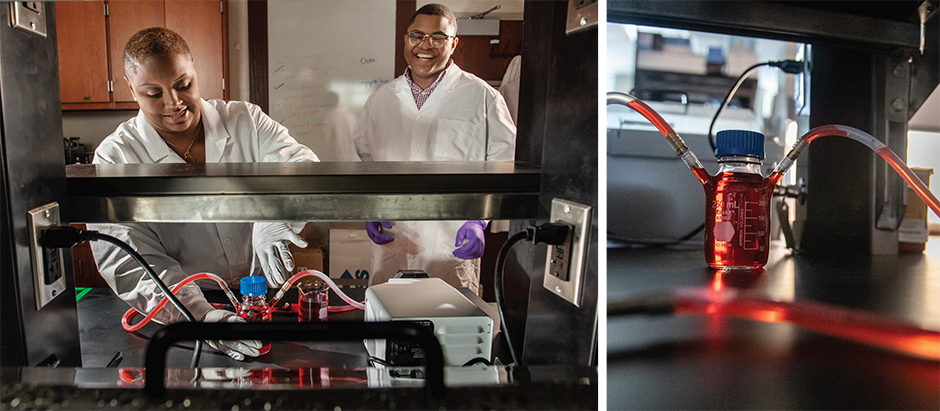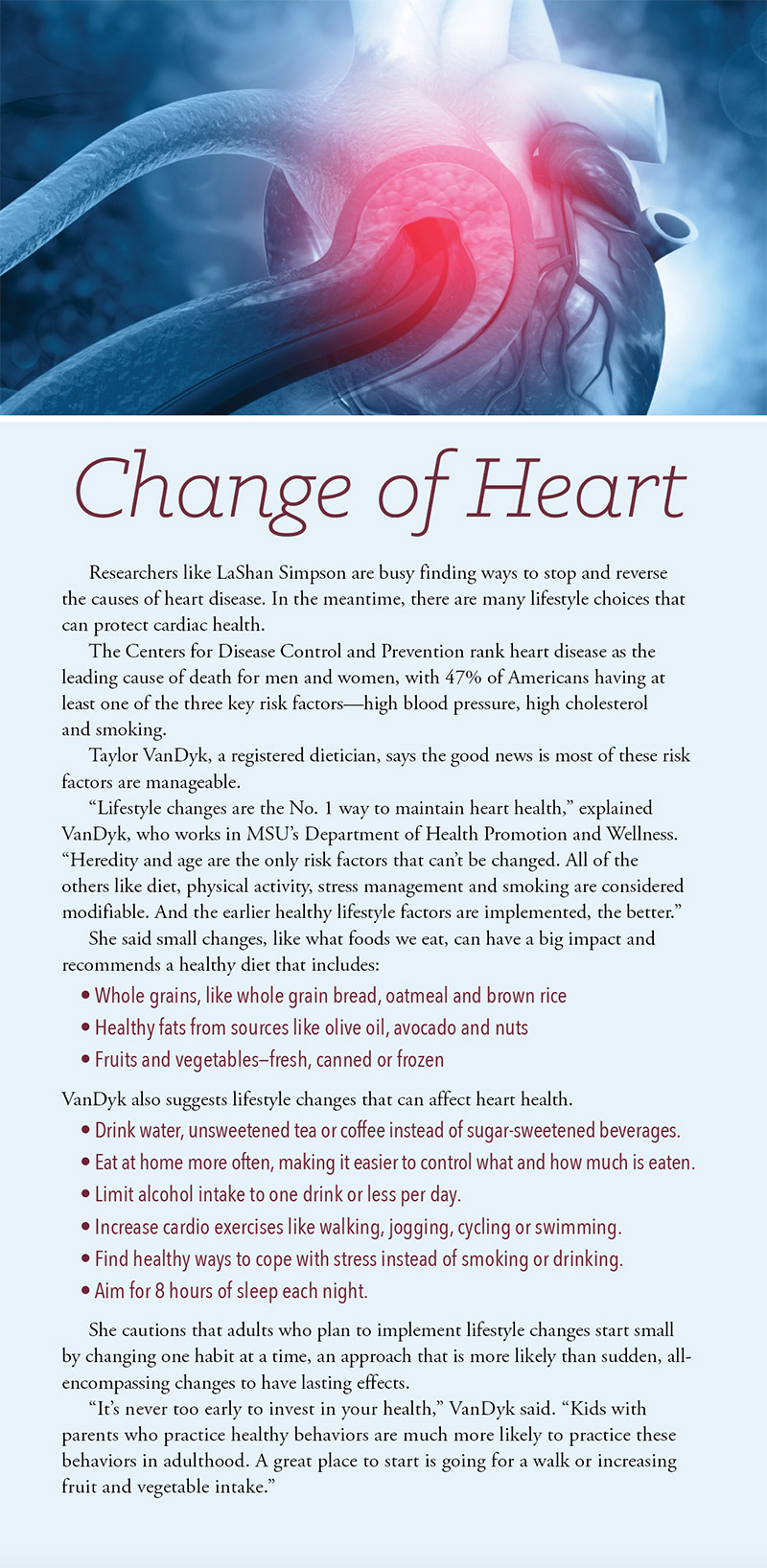
When it comes to cardiovascular research, LaShan Simpson seeks to get to the heart of the matter.
“I love scientific mysteries like what you’d find on ‘CSI’ when something’s missing that no one else is talking about,” Simpson said. “I love my research because we’re trying to figure out something no one has before.”
Simpson, an associate professor in the Department of Agricultural and Biological Engineering, is studying vascular calcification—a buildup of minerals in blood vessels, which can lead to a heart attack or stroke.
“When someone has a blockage due to vascular calcification, they receive a stent or undergo a procedure to remove the calcification, but both of these methods are temporary fixes,” Simpson said. “No one knows how to stop vascular calcification from happening in the first place.”
Unlocking the Mystery at Heart
Simpson said better understanding of how to prevent vascular calcification begins at the cellular level.
“A phenomenon we know happens during calcification is a switch at the cellular level,” Simpson explained. “Smooth muscle cells that line the artery change into bonelike cells.”
While scientists know this phenomenon occurs, no one has figured out why and when the switch takes place. Simpson hopes a 3D model she’s designing will help decipher these unknowns.
Simpson’s patent-pending 3D vascular calcification model, funded by the Mississippi Agricultural and Forestry Experiment Station, lets her observe the process in a way that mimics how it happens in the body.
The model starts with pig arteries. The porcine DNA is removed while the extracellular scaffolding remains intact. Human smooth muscle cells are added to that scaffolding. At that point, Simpson introduces factors to induce calcification.
“We mimic what happens in the body,” she explained. “You’ve heard about people who have too much salt in their diet or eat too many processed foods. Those habits can lead to high levels of sodium and phosphorus in the blood, which causes vascular calcification. We add sodium phosphate to the model to mimic this process that can happen in the body.”
Once the minerals are added, everything is placed in a bioreactor, which adds dynamic flow of fluids.
“Once we add flow through the bioreactor, the artery acts similar to how it would in the body,” Simpson explained. “We can alter the rate fluid moves through the artery to act just like blood flow, so we see things like the mechanical shearing of cells. This allows us to better understand how the calcification process impacts the smooth muscle cells.”

LaShan Simpson, left, works alongside junior Christopher Robinson, right. In her effort to understand and stop vascular calcification, the associate professor is creating a 3D heart model that will pump fluid like its living counterpart to give her team a look at cellular-level changes that lead to heart damage.
She said the purpose of the three-dimensional model is to show how arteries act differently inside the human body.
“Showing that we can induce calcification in a 3D model is important because it is more like what happens in the body. In the body, arteries are in a three-dimensional matrix, under flow all the time, in a soft material,” Simpson said. “This allows us to study healthy and diseased cells in an environment similar to the body, so we can solve the mystery of why and when smooth muscle cells make the switch to bonelike cells during calcification.”
From there, Simpson said other types of cells that also play a role in calcification can be studied and treatment options can be explored.
“We’re working on understanding the signaling process that initiates calcification in smooth muscle cells so that we can develop a treatment that reverses the switch,” Simpson said.
She said she hopes her work will one day contribute to finding a way to stop and reverse vascular calcification before significant damage can occur.
“If this is successful, we’ll be able to test different treatments on this model and since it will be similar to what happens in the body, we’ll understand which treatments might be most effective,” she said.
A Heart for Teaching
Students in Simpson’s lab play a big role in the research. While she asks the utmost in excellence of each of them, it’s evident she takes teaching to heart.

The Clinton, South Carolina, native is a first-generation college student who was raised by a single mother and understands the challenges many students face when navigating college.
Simpson serves as diversity coordinator for the MSU Judy and Bobby Shackouls Honors College, is on the College of Agriculture and Life Sciences diversity council and was one of two MSU faculty members awarded the 2020 Diversity Award by the Mississippi Board of Trustees of State Institutions of Higher Learning. She makes it a point to seek out those students—many who are underrepresented minorities in their fields—and help them on their paths.
“My students are the reason I get out of bed in the morning,” Simpson said. “Oftentimes, the smartest students in the class are the quietest, so I pull them out and get them involved and engaged.”
She emphasized the need to amplify voices that aren’t always heard in a traditional academic setting.
“I remember being a student and not knowing who to go to for answers because I didn’t have a mentor to look up to, who looked like me and would understand my experience,” she said. “Marginalized communities must have a seat at the table, to influence the culture of an institution at each level. That means more than just increasing diversity among the student population but inclusion across the board.”
Christopher Robinson joined Simpson’s lab this fall. The junior biological engineering major from Brookhaven is interested in cardiology and hopes to pursue a career addressing health inequities in that area.
“Cardiovascular health is a good way to target one of the biggest health issues in the state and nation,” said Robinson, who Simpson mentored in MSU’s honors college and as adviser for the MSU’s Biomedical Engineering Association, which Robinson serves as an executive board member.
“Her kindness and dedication to students branch outside of academics,” he said. “Dr. Simpson goes beyond to make sure students are engaged and have opportunities to feel heard.”
By Vanessa Beeson | Photo by Megan Bean
